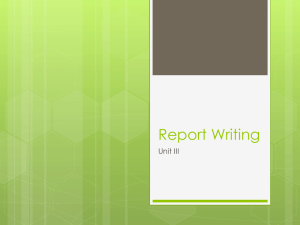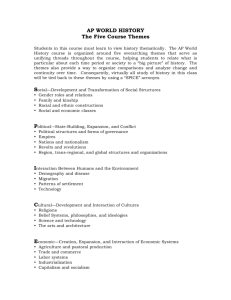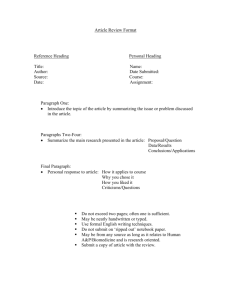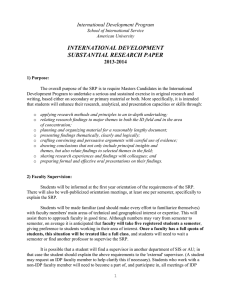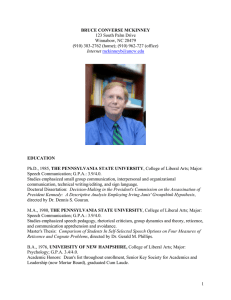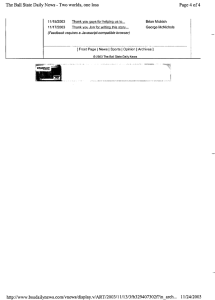syllabus
advertisement
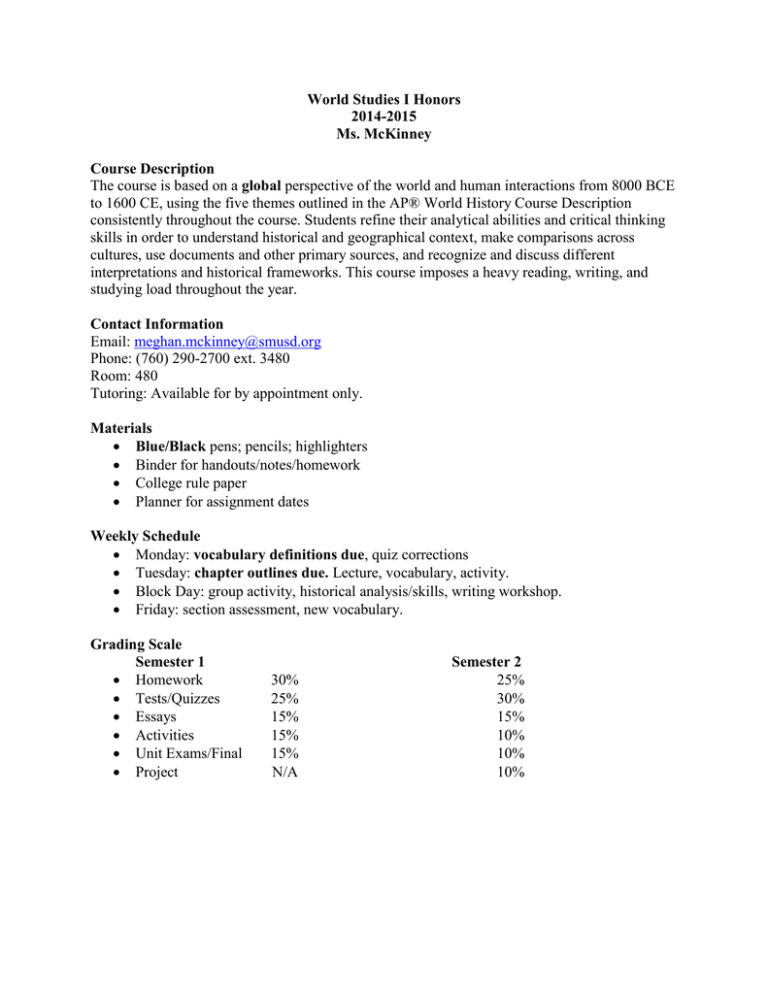
World Studies I Honors 2014-2015 Ms. McKinney Course Description The course is based on a global perspective of the world and human interactions from 8000 BCE to 1600 CE, using the five themes outlined in the AP® World History Course Description consistently throughout the course. Students refine their analytical abilities and critical thinking skills in order to understand historical and geographical context, make comparisons across cultures, use documents and other primary sources, and recognize and discuss different interpretations and historical frameworks. This course imposes a heavy reading, writing, and studying load throughout the year. Contact Information Email: meghan.mckinney@smusd.org Phone: (760) 290-2700 ext. 3480 Room: 480 Tutoring: Available for by appointment only. Materials Blue/Black pens; pencils; highlighters Binder for handouts/notes/homework College rule paper Planner for assignment dates Weekly Schedule Monday: vocabulary definitions due, quiz corrections Tuesday: chapter outlines due. Lecture, vocabulary, activity. Block Day: group activity, historical analysis/skills, writing workshop. Friday: section assessment, new vocabulary. Grading Scale Semester 1 Homework Tests/Quizzes Essays Activities Unit Exams/Final Project 30% 25% 15% 15% 15% N/A Semester 2 25% 30% 15% 10% 10% 10% General Assignment Expectations All work must be written in complete sentences and in blue/black pen or pencil unless otherwise stated (i.e. bell work, summaries, reflections, in class writing) The correct heading must appear on every assignment. Any work turned in without a correct heading, incomplete sentences, or in a color not specified will receive a zero. Absolutely no text message grammar is allowed. It is the student’s responsibility to check with the teacher for missed notes, tests, or assignments after an excused absence. Late work is not accepted, except in unforeseeable circumstances; contact teacher. Chapter Note Expectations All notes will be collected every Tuesday of each week. All notes must be hand written; no typed notes. Correct heading: name, date, class period, topic title. Identify objective(s), thesis, vocabulary, summary. Identify aspects of PERSIAN. Vocabulary Expectations Students must identify the vocabulary terms for each section. Information o Vocabulary Term o Definition, civilization (region), time period, influence on society, page number. The structure of the course will follow five themes outlined by the AP College Board which serve as a guide to our understanding of world history and will be referred to throughout the course the year. These themes are: 1. Interaction between humans and the environment: demography and disease, migration, patterns of settlement, technology 2. Development and interaction of cultures: religions, belief systems, philosophies, ideologies, science & technology, arts & architecture. 3. State building, expansion and conflict: political structures and forms of governance, empires, nations and nationalism, revolts and revolutions, regional, transregional, and global structures and organizations 4. Creation, expansion, and interaction of economic systems: agricultural and pastoral production, trade and commerce, labor systems, industrialization, capitalism and socialism. 5. Development and transformation of social structures: gender roles and relations, family and kinship, racial and ethnic constructions, social and economic classes.

